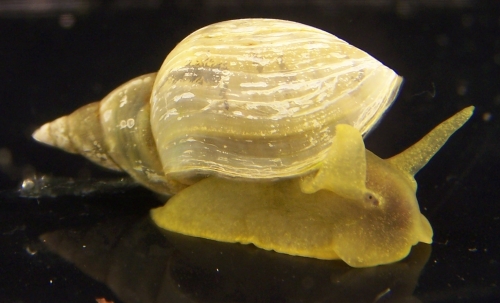Biologists discover a key regulator in the pacemakers of our brain and heart

The researchers discovered T-type channels in the pond snail, Lymnaea stagnalis, can shift from using calcium ions to using sodium ions to generate the electrical signal.
Understanding how these shields work will help researchers eventually develop a new class of drugs for treating epilepsy, cardiovascular disease and cancer.
The study from the University of Waterloo is published in the Journal of Biological Chemistry today and is featured as the “Paper of the Week” for its significance.
The researchers discovered T-type channels in the pond snail, Lymnaea stagnalis, can shift from using calcium ions to using sodium ions to generate the electrical signal because of an outer shield of amino acids called a turret situated above the channel’s entrance.
Low voltage T-type channels generate tiny pulses of current at regular intervals by selectively passing positively charged cations across the cell’s membrane through a gate-like channel. The channels are normally extremely selective, allowing just one sodium ion to pass for every 10,000 calcium ions.
The resulting rhythmic signals produced by this transfer of cations are what support the synchronous contraction of our heart muscles and neuronal firing in parts of the brain, like the thalamus, which helps regulate our sleep-wake cycle, or circadian rhythm.
In addition to their published findings, the researchers also found the shield-like turrets in pond snails restrict access of therapeutic drugs to the channel.
T-type channels in pond snails and other invertebrates are similar to those found in humans. Although pond snails reach only 7 cm in length, its simple neural network and physiology make it a popular model organism with neurobiologists.
Over-active T-type channels are linked to epilepsy, cardiac problems, neuropathic pain, as well as the spreading of several kinds of cancer. Drugs that could quench out-of-control T-type channel activity are unable to bind to the channels themselves.
“We wanted to understand the molecular structures of T-type channels,” said Spafford. “How they pass ionic currents to generate electrical activity, and to identify drug binding sites, and the drugs which may block these channels to treat neurological disease or heart complications.”
The group is currently investigating how dismantling this extracellular turret will improve drug access and binding in T-type channels.
Waterloo Biology graduate students Adriano Senatore, Wendy Guan and Research Associate Adrienne Boone carried out the research under the supervision of Professor David Spafford.
Adriano Senatore recently graduated with his doctorate in 2013. He received the Governor General’s Medal for best PhD thesis at the University of Waterloo. Senatore has published more than a dozen research articles with Dr. Spafford for his PhD thesis research.
This work was funded by the Heart and Stroke Foundation of Canada and the NSERC Discovery program.
In just half a century, the University of Waterloo, located at the heart of Canada's technology hub, has become one of Canada's leading comprehensive universities with 35,000 full- and part-time students in undergraduate and graduate programs. Waterloo, as home to the world's largest post-secondary co-operative education program, embraces its connections to the world and encourages enterprising partnerships in learning, research and discovery. In the next decade, the university is committed to building a better future for Canada and the world by championing innovation and collaboration to create solutions relevant to the needs of today and tomorrow. For more information about Waterloo, please visit www.uwaterloo.ca.
Media Contact
Nick Manning
University of Waterloo
519-888-4451
226-929-7627
www.uwaterloo.ca/news
@uWaterlooNews
Attention broadcasters: Waterloo has facilities to provide broadcast quality audio and video feeds with a double-ender studio. Please contact us to book.
Media Contact
All latest news from the category: Life Sciences and Chemistry
Articles and reports from the Life Sciences and chemistry area deal with applied and basic research into modern biology, chemistry and human medicine.
Valuable information can be found on a range of life sciences fields including bacteriology, biochemistry, bionics, bioinformatics, biophysics, biotechnology, genetics, geobotany, human biology, marine biology, microbiology, molecular biology, cellular biology, zoology, bioinorganic chemistry, microchemistry and environmental chemistry.
Newest articles

Properties of new materials for microchips
… can now be measured well. Reseachers of Delft University of Technology demonstrated measuring performance properties of ultrathin silicon membranes. Making ever smaller and more powerful chips requires new ultrathin…

Floating solar’s potential
… to support sustainable development by addressing climate, water, and energy goals holistically. A new study published this week in Nature Energy raises the potential for floating solar photovoltaics (FPV)…

Skyrmions move at record speeds
… a step towards the computing of the future. An international research team led by scientists from the CNRS1 has discovered that the magnetic nanobubbles2 known as skyrmions can be…





















